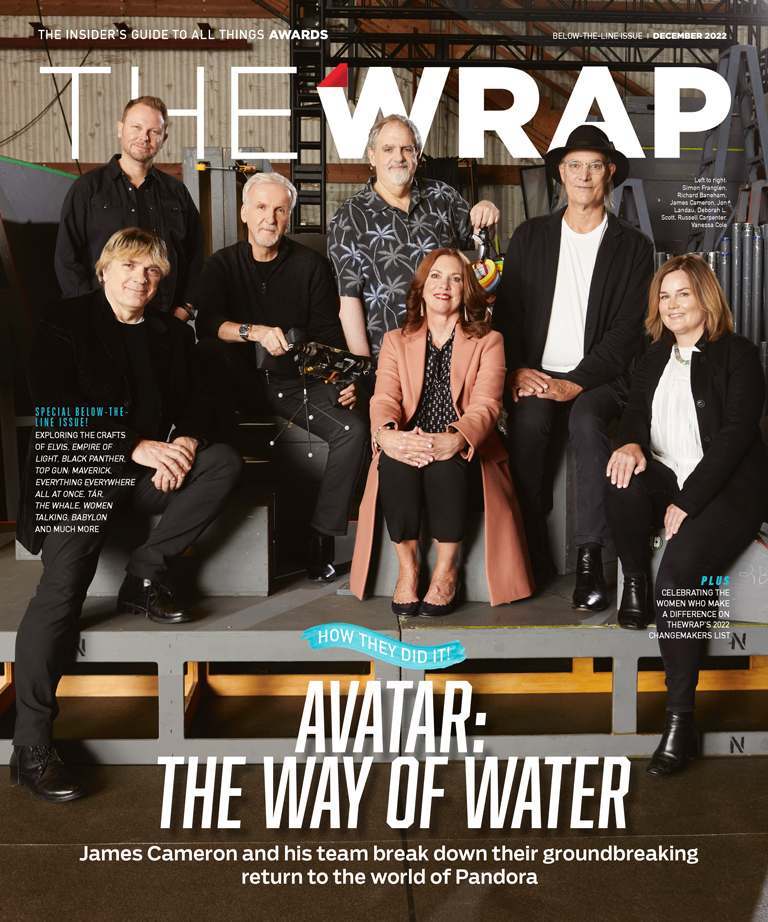
This interview with “Avatar: The Way of Water” cinematographer Russell Carpenter first appeared in a special section of the Below-the-Line issue of TheWrap’s awards magazine.
The best solution to a difficult problem can sometimes come from an unexpectedly practical place. Just ask cinematographer Russell Carpenter, who had worked with James Cameron before. He served as DP on 1994’s “True Lies” and 1997’s “Titanic” (where he came in as a replacement and wound up winning the Oscar for his work), and this time around his work encompassed live-action photography, motion-capture work and advising the visual effects teams on virtual lighting conditions.
And while there really isn’t any other film like “Avatar: The Way of Water,” photographically or otherwise, that doesn’t mean you can’t rely on old tricks of the trade. Like, for example, mirrors.
In the sequence pictured on this page, our main characters, performance-captured by actors and replaced by computer-generated Na’vi, are perilously surrounded by fire. (We hesitate to reveal too much but, this being a James Cameron movie, something definitely explodes.)
“That’s a perfectly good example of how live-action can be used to benefit what Weta FX is doing,” Carpenter said. The production could never use LED screens the way that, say, “The Mandalorian” does, because “Avatar: The Way of Water” was shooting in native 3D. “You can’t use the image that’s on that LED because it just looks like a billboard. But they work gangbusters when you hung them around a pool as reflections because now all of a sudden, it’s basically hell on the ocean.”
The reaction of the fire on the water is something that was notoriously difficult to reproduce in the computer. Carpenter and his team surrounded the massive water tank where they filmed “Avatar: The Way of Water” and they played footage of the fire. “And that is what you’ll see — just those reflections,” Carpenter said. But how to get the reflection just right, especially where the fire meets the water? That’s where the mirrors come in.
“We brainstormed and the system we came up with was, we’ll just hang these LED monitors face down and have a mirror at a 45-degree angle,” Carpenter said. “The mirror will go into the water a foot-and-a-half and so now that reflection meets the water completely. We had several of those panels. It’s totally old school!”
And this wasn’t even the most old-school trick they used. When re-creating a jungle landscape on the blue-screen stage, Carpenter and the electricians hung gauzy fabric, macramé and camouflage, so when you shined light through it, it would reproduce the look of a rain forest canopy.
“You could be on a set in the 1940’s and see the same thing,” Carpenter said. “That’s what I love. And Jim is just as happy doing a very old-school solution for a problem than coming up with something that is totally razzle-dazzle. He’s very conversant with everything that’s been done.”
Read more from the Below-the-Line issue here.















